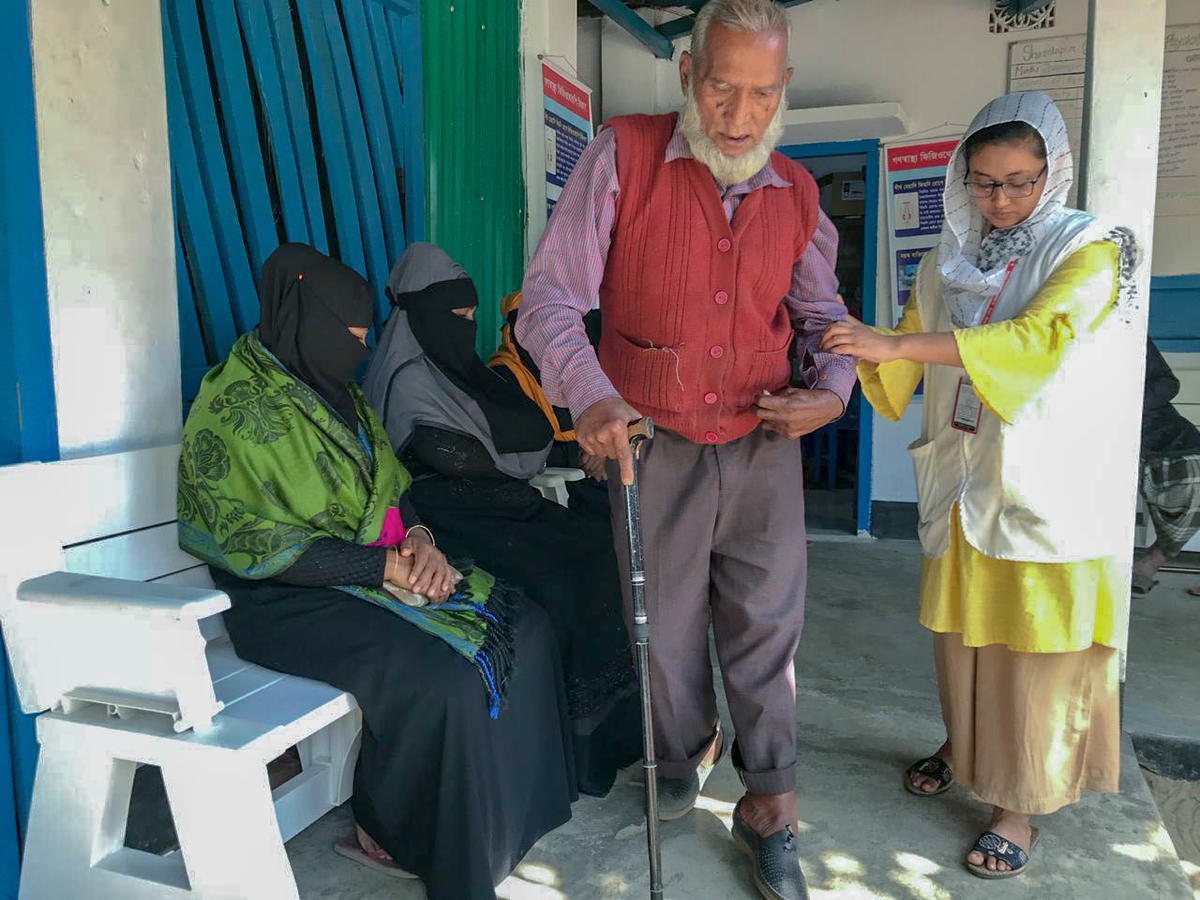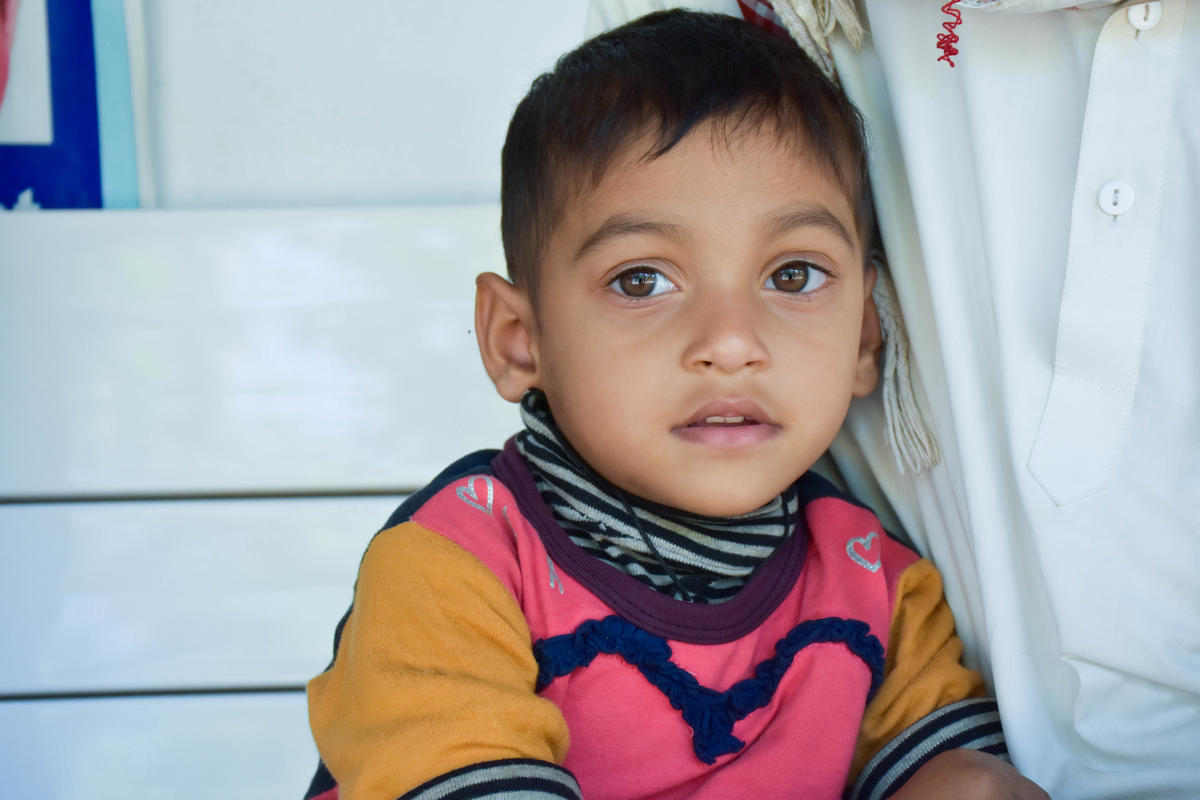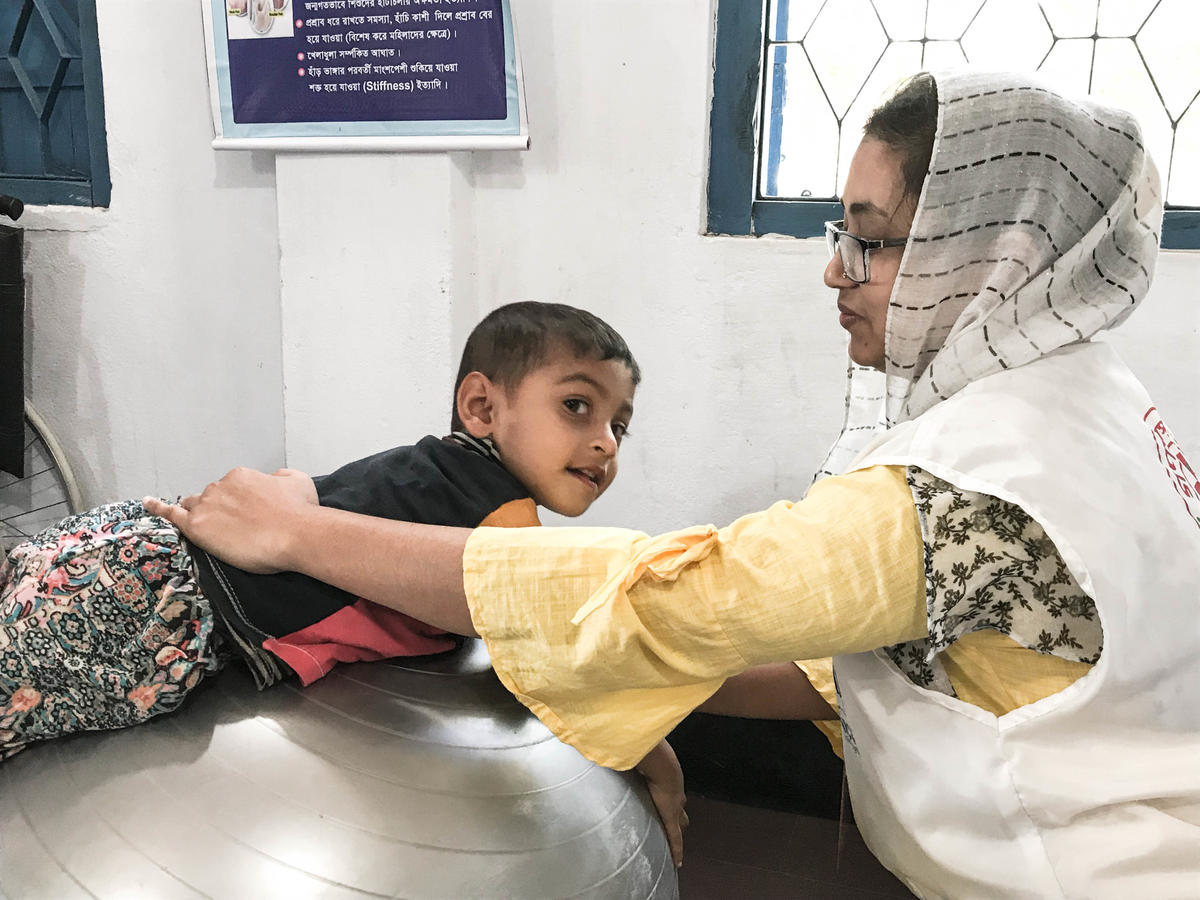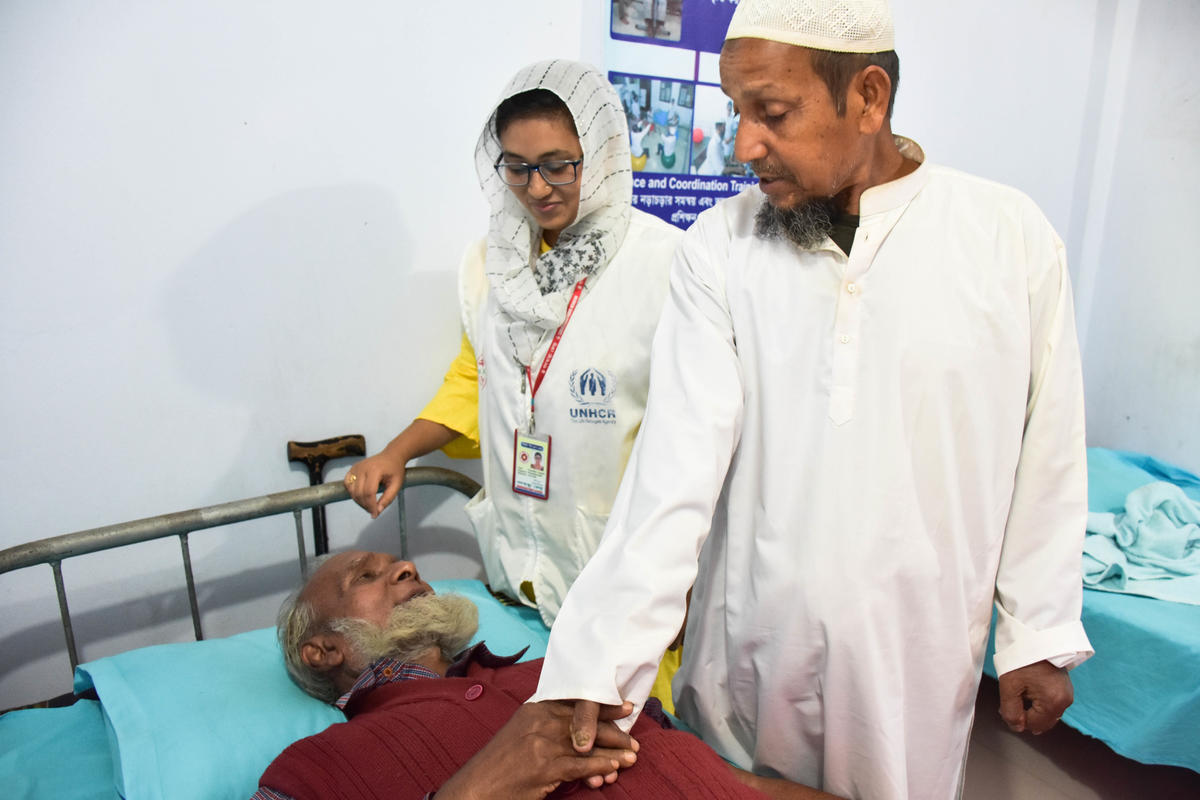Clinic helps refugees and Bangladeshis in pain
Hazera has a medical card which says she is 55 years old, however her doubled-over posture and face says she is older and in pain.
She is also a grandmother and a Rohingya refugee. She fled Myanmar in 2017 with seven children, and four grandchildren. In the violence inflicted on the Rohingya, two other sons were killed.
Hazera and her family live, not in the vast settlement of Kutupalong, which houses more than 633,000 people, but in a neighbouring makeshift refugee settlement, close to the host community.
They came to Shamlapur because her daughter had in-laws already living here. Hazera and her family are among the estimated 170,000 refugees who live in refugee settlements alongside Bangladeshis in districts further south in the peninsula.
Then the pain, the physical pain, started in her shoulder.
“Back in Myanmar, these people never received any proper medical treatment.”
It became so severe that she could barely move her arm. A neighbour, a Bangladeshi woman, told her about the Shamlapur physiotherapy clinic.
“I had no money,” she says. “I came here because they told me it was free.”
The clinic was set up by UNHCR, the UN Refugee Agency, in July 2018 to serve both the host community and Rohingya refugees and does not charge patients any fees. The clinic employs two physiotherapists and two assistants.
Hazera hesitated before coming, but the physiotherapy was so helpful that she returned for several more sessions.
“I feel better,” she says. “The pain is much reduced.” But she still has trouble moving her arm.
Her experience is both typical, and not typical, according to Naushin Anjum, one of the clinic’s physiotherapists.
“Back in Myanmar, these people never received any proper medical treatment,” Naushin says. “At first the refugees seemed to be very afraid, but we started by motivating them, and explaining everything properly. Gradually they came for treatment, but many don’t come back for follow-up treatment.”
Most of the patients at the clinic are, in fact, Bangladeshi – 874, compared to 286 Rohingya between the July 2018 and October 2019. That reflects the population in the area: 16,319 Bangladeshis compared to 10,210 Rohingya.
For the Bangladeshis, as well, the clinic is something new. “In Shamlapur they have never had physio before,” Naushin says.
Now they come with their ills and injuries.
Mohammed Ullam Kaisar has been coming for several months. He was in a car accident which killed the five other people with him. He was badly injured and limps to the physio room holding his right arm.
“My doctor told me I wouldn’t ever again be able to use my right hand to write,” he says. “So I come here to strengthen my muscles, and every day since the beginning of the year I practise writing with my left hand. That way I’ll be able to return to finish my accounting degree.”
Programmes that support both refugees and their host communities will be one of the topics under discussion at the Global Refugee Forum, a high-level meeting to be held in Geneva later this year. States, the private sector and other actors will announce high-impact contributions that will give refugees a chance to thrive alongside their hosts.
“They get treatment with us at the clinic and that’s good.”
According to Naushin, there is little friction between the two communities. The physiotherapists see themselves as a bridge between the two. “As a medical person, it makes me feel good to serve both.”
In another treatment room in the clinic, Golam Kibriya is receiving massage treatment on his bent back. He says he is 100 years old.
“I was pretty good until a few years ago,” he says. “Then my back began to hurt terribly. They had to carry me here.”
His lower spine suffers from curvature. The physio lessens the pain and prevents the muscles in his legs from wasting further.
“I feel much better now,” he says.
As for the Rohingya at the clinic and in town, Naushin says: “They get treatment with us at the clinic and that’s good. It’s the responsibility of Muslims here to help them.”
Hazera says she appreciates the help she has received from the local community, and will try to repay it.
“If I get better,” she says, “I will go the mosque and cook for the children here.”














